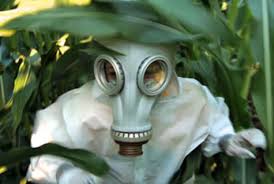5 toxin-clearing plants you should have in your home
05/09/2018 / By Zoey Sky

When it comes to decor, go-to choices often include tasteful art pieces or some lovely houseplants that can add life to any room in your house. However, aside from beautifying your home, studies have shown that certain houseplants can help clear toxins in the air.
Polluted indoor air and pollutants
Polluted air can be found both indoors and outdoors, but there’s no reason why we can’t take measures to reduce the toxins in our own homes. In fact, according to the Environmental Protection Agency (EPA), indoor air can contain more pollutants than outdoor air.
Indoor pollutants may include:
- Gases (e.g., carbon monoxide and radon)
- Household products
- Materials used in the building (e.g., asbestos, formaldehyde, or lead)
- Mold
- Pesticides
- Pollen
- Tobacco smoke
Polluted indoor air can cause the symptoms of a condition called “sick building syndrome,” and these include fogginess, a lack of concentration, and tiredness. The longer you’re indoors in an area with poor air quality, the higher your chances are of experiencing these symptoms.
If you have allergies or respiratory conditions like asthma, breathing in the polluted indoor air can also cause, coughing, dizziness, headaches, or wheezing. The ironic thing is, even the cleaning products we use also contribute to indoor air pollution due to the many harmful chemicals that they contain. (Related: Another way to clean your air: Salt lamps purify the air and charge it with healthy negative ions.)
How can household plants help?
Plants help reduce carbon dioxide levels in the air, and they release oxygen. Through this “breathing” process, plants also help filter various gases and compounds such as potentially harmful volatile organic compounds (VOC).

Based on research from the National Aeronautics and Space Administration (NASA), having at least one medium-sized houseplant per 100 square feet in your home can help eliminate VOCs. If you keep at least two to four houseplants for every 100 square feet, you can remove a whopping 87 percent of air toxins in about 24 hours.
By taking good care of these houseplants, you can also boost their toxin-clearing properties.
Below are five indoor plants that can help you clear toxins from your home:
- Chinese evergreen (Aglaonema) – The Chinese evergreen has eye-catching striped leaves. It also blooms occasionally. This houseplant requires minimal attention, and it can grow in low-light spots. However, the Chinese evergreen will thrive in medium and bright spots. Keep the houseplant away from direct afternoon sunlight and don’t overwater it.
- Dracaena – Various types of dracaena can have tree-like woody stems as they grow and after some time these houseplants can tower up to five or six feet tall. Dracaenas thrive in natural household conditions, and you can keep them in medium- and brightly-lit areas. Water dracaenas when the soil surface gets dry, such as every week.
- Peace lily (Spathiphyllum) – The peace lily has broad green leaves and beautiful white flowers that look like calla lilies. A favorite among gardeners, the peace lily is also the top entry in NASA’s list of plants that remove some of the most common VOCs. Peace lilies grow in high- or medium-light environments. While they can also grow in low light, they won’t bloom as much in this condition. This houseplant requires regular watering. The peace lily can wilt when it dries out, but watering it can help the plant grow once more.
- Philodendron – Classic philodendron varieties are easy to care for, and several species of this houseplant can climb as they grow, such as on a trellis or trailing from a hanging basket. Philodendrons thrive in medium or bright-light spots, but they can also tolerate low light. Philodendrons have to be watered when the soil surface dries. Take note that this plant can die when overwatered.
- ZZ plant (Zamioculcas) – If you’re not sure what houseplant to get, try raising a ZZ plant. This houseplant is suitable for beginners, and they can grow under any lighting condition. The ZZ plant can flourish even in low-light environments despite infrequent waterings.
You can read more articles about plants that can keep the air in your home clean at GreenLivingNews.com.
Sources include:
Submit a correction >>
Tagged Under:
This article may contain statements that reflect the opinion of the author





















